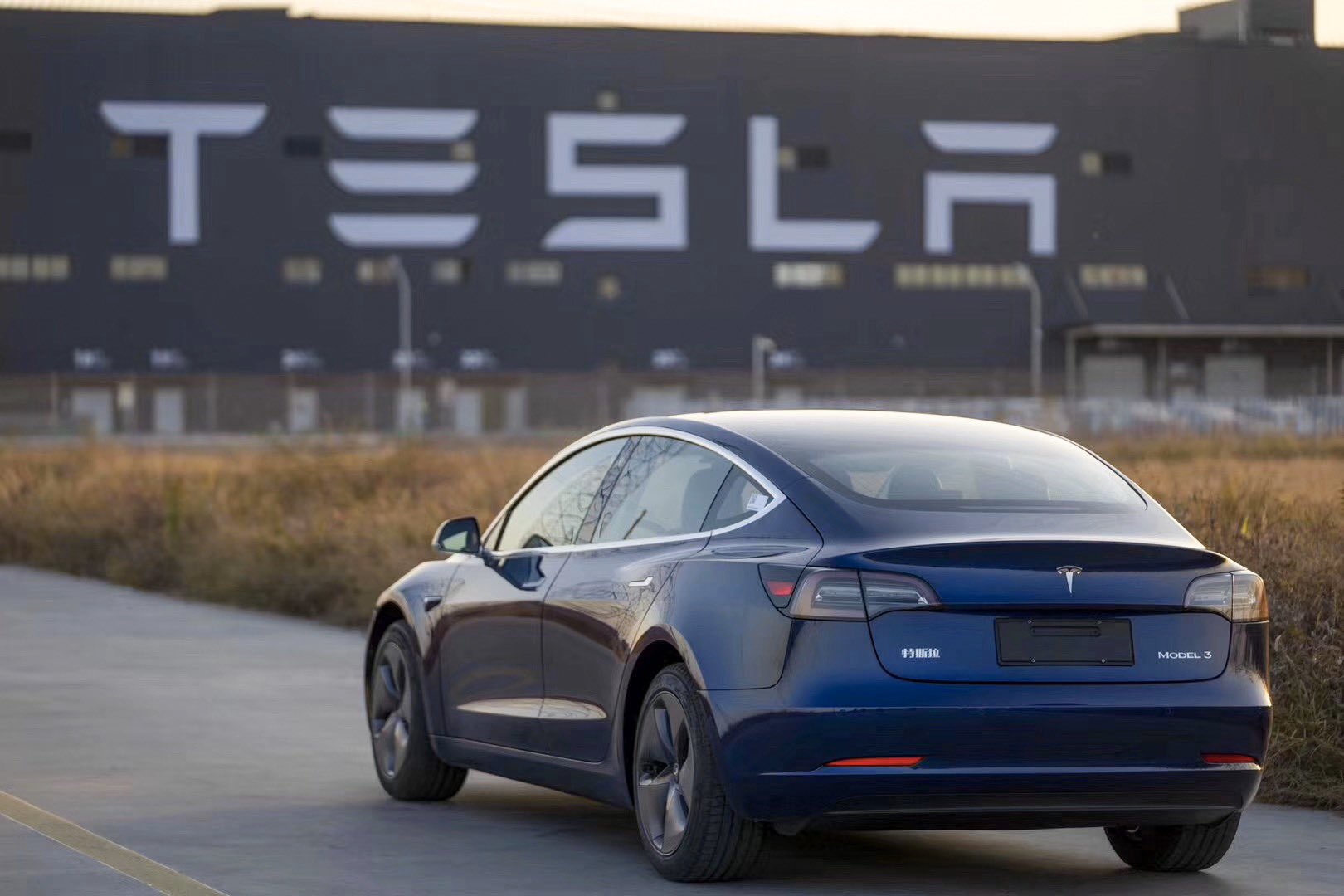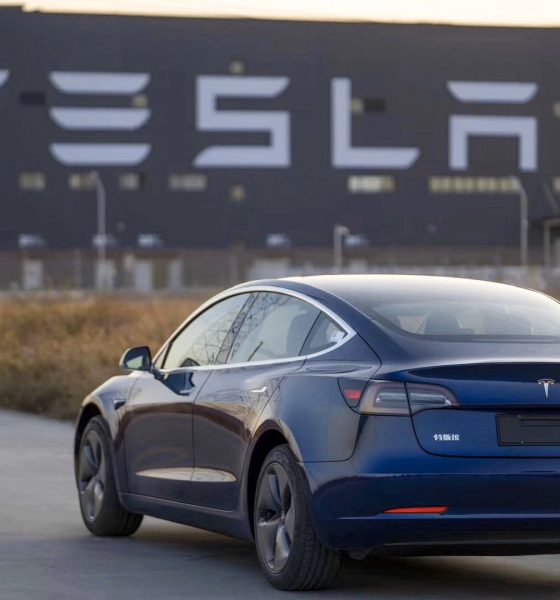

News
Tesla ‘a disproportional beneficiary’ of China’s incoming green tidal wave: Dan Ives
Tesla is set to be “a disproportional beneficiary” of China’s growing adoption of electric vehicles and sustainable energy, according to Wedbush analyst and Tesla bull Dan Ives.
After navigating through a difficult few months in China, where Tesla combated unfair PR on several occasions that brought the safety of the company vehicles into question, Ives now believes that the automaker can now focus on expanding on its already solid foundation in the region. The Chinese market has been an exceptionally potent location for electric vehicle makers, becoming a main focus of several OEMs that are working to transition toward electrification. Tesla, while being a mainstay in China’s EV sales leaderboard for over a year, is primed to benefit from the market’s evergrowing love affair with the electric vehicle, continuing a monumental climb toward automotive legacy in the world’s largest car market.
Despite falsified reports of faulty braking systems on several occasions, Tesla has managed to be one of the best-selling EV manufacturers in China. In Q2, Tesla sold over 53,000 cars in China, capped off by an impressive 28,138 cars in the domestic market in June. The strong performance was fueled by demand for the Model 3 and Model Y, the two cars that Tesla manufactures in China at the Giga Shanghai production facility.
Although Tesla’s Q2 was a strong one, it wasn’t all sunshine and rainbows for the Silicon Valley-based electric car company. As previously mentioned, Tesla battled several claims of brake failures in its vehicles. The initial occurrence of this was at the Shanghai Auto Show, where the Tesla booth was infiltrated by a woman who claimed faulty brakes caused a dangerous accident. Tesla navigated through this scandal, along with several others by continuously debunking these claims. The company eventually set up a Special Handling Team to handle these issues, and also threatened legal action for those who were attempting to gain notoriety or money through false claims.
Ives acknowledges Tesla’s bumpy and tumultuous road in China in Q2, but the performance, which is indicated through the strong sales figures during the PR nightmare, essentially proves the company is ready to move on to even more robust sales figures. “We believe Tesla have navigated the safety/PR issues better than expected, and are now in a position to accelerate market share in this key region,” Ives wrote.
In May, Ives also wrote that Tesla, along with other manufacturers like NIO, Xpeng, and Li Auto, would all benefit from an increasing EV market share in China. Ives wrote in the May note that only 5% of total automotive sales in China were EVs and that the next two years would result in a doubling of this market concentration of electrified models.
While China was bumpy during the quarter we believe Tesla have navigated the safety/PR issues better than expected and are now in a position to accelerate market share in this key region. We believe the green tidal wave is on the horizon with Tesla a disproportional beneficiary.
— Daniel Ives (@DivesTech) July 21, 2021
In short, the benefits of a more supported EV market in China are going to fuel many automakers, but Tesla seems to be the one that Ives is putting his money on. This is mostly because of the fact that bad press really didn’t affect sales figures, and Tesla continues to perform in one of the most heavily concentrated EV markets globally.
Ives is ranked 43rd out of 7,591 analysts on TipRanks.com. He has a success rate of 74% and an average return of 35.3%.
Disclosure: Joey Klender is a TSLA Shareholder.

Elon Musk
Elon Musk and Tesla AI Director share insights after empty driver seat Robotaxi rides
The executives’ unoccupied tests hint at the rapid progress of Tesla’s unsupervised Robotaxi efforts.

Tesla CEO Elon Musk and AI Director Ashok Elluswamy celebrated Christmas Eve by sharing personal experiences with Robotaxi vehicles that had no safety monitor or occupant in the driver’s seat. Musk described the system’s “perfect driving” around Austin, while Elluswamy posted video from the back seat, calling it “an amazing experience.”
The executives’ unoccupied tests hint at the rapid progress of Tesla’s unsupervised Robotaxi efforts.
Elon and Ashok’s firsthand Robotaxi insights
Prior to Musk and the Tesla AI Director’s posts, sightings of unmanned Teslas navigating public roads were widely shared on social media. One such vehicle was spotted in Austin, Texas, which Elon Musk acknowleged by stating that “Testing is underway with no occupants in the car.”
Based on his Christmas Eve post, Musk seemed to have tested an unmanned Tesla himself. “A Tesla with no safety monitor in the car and me sitting in the passenger seat took me all around Austin on Sunday with perfect driving,” Musk wrote in his post.
Elluswamy responded with a 2-minute video showing himself in the rear of an unmanned Tesla. The video featured the vehicle’s empty front seats, as well as its smooth handling through real-world traffic. He captioned his video with the words, “It’s an amazing experience!”
Towards Unsupervised operations
During an xAI Hackathon earlier this month, Elon Musk mentioned that Tesla owed be removing Safety Monitors from its Robotaxis in Austin in just three weeks. “Unsupervised is pretty much solved at this point. So there will be Tesla Robotaxis operating in Austin with no one in them. Not even anyone in the passenger seat in about three weeks,” he said. Musk echoed similar estimates at the 2025 Annual Shareholder Meeting and the Q3 2025 earnings call.
Considering the insights that were posted Musk and Elluswamy, it does appear that Tesla is working hard towards operating its Robotaxis with no safety monitors. This is quite impressive considering that the service was launched just earlier this year.
Elon Musk
Starlink passes 9 million active customers just weeks after hitting 8 million
The milestone highlights the accelerating growth of Starlink, which has now been adding over 20,000 new users per day.

SpaceX’s Starlink satellite internet service has continued its rapid global expansion, surpassing 9 million active customers just weeks after crossing the 8 million mark.
The milestone highlights the accelerating growth of Starlink, which has now been adding over 20,000 new users per day.
9 million customers
In a post on X, SpaceX stated that Starlink now serves over 9 million active users across 155 countries, territories, and markets. The company reached 8 million customers in early November, meaning it added roughly 1 million subscribers in under seven weeks, or about 21,275 new users on average per day.
“Starlink is connecting more than 9M active customers with high-speed internet across 155 countries, territories, and many other markets,” Starlink wrote in a post on its official X account. SpaceX President Gwynne Shotwell also celebrated the milestone on X. “A huge thank you to all of our customers and congrats to the Starlink team for such an incredible product,” she wrote.
That growth rate reflects both rising demand for broadband in underserved regions and Starlink’s expanding satellite constellation, which now includes more than 9,000 low-Earth-orbit satellites designed to deliver high-speed, low-latency internet worldwide.
Starlink’s momentum
Starlink’s momentum has been building up. SpaceX reported 4.6 million Starlink customers in December 2024, followed by 7 million by August 2025, and 8 million customers in November. Independent data also suggests Starlink usage is rising sharply, with Cloudflare reporting that global web traffic from Starlink users more than doubled in 2025, as noted in an Insider report.
Starlink’s momentum is increasingly tied to SpaceX’s broader financial outlook. Elon Musk has said the satellite network is “by far” the company’s largest revenue driver, and reports suggest SpaceX may be positioning itself for an initial public offering as soon as next year, with valuations estimated as high as $1.5 trillion. Musk has also suggested in the past that Starlink could have its own IPO in the future.
News
NVIDIA Director of Robotics: Tesla FSD v14 is the first AI to pass the “Physical Turing Test”
After testing FSD v14, Fan stated that his experience with FSD felt magical at first, but it soon started to feel like a routine.

NVIDIA Director of Robotics Jim Fan has praised Tesla’s Full Self-Driving (Supervised) v14 as the first AI to pass what he described as a “Physical Turing Test.”
After testing FSD v14, Fan stated that his experience with FSD felt magical at first, but it soon started to feel like a routine. And just like smartphones today, removing it now would “actively hurt.”
Jim Fan’s hands-on FSD v14 impressions
Fan, a leading researcher in embodied AI who is currently solving Physical AI at NVIDIA and spearheading the company’s Project GR00T initiative, noted that he actually was late to the Tesla game. He was, however, one of the first to try out FSD v14.
“I was very late to own a Tesla but among the earliest to try out FSD v14. It’s perhaps the first time I experience an AI that passes the Physical Turing Test: after a long day at work, you press a button, lay back, and couldn’t tell if a neural net or a human drove you home,” Fan wrote in a post on X.
Fan added: “Despite knowing exactly how robot learning works, I still find it magical watching the steering wheel turn by itself. First it feels surreal, next it becomes routine. Then, like the smartphone, taking it away actively hurts. This is how humanity gets rewired and glued to god-like technologies.”
The Physical Turing Test
The original Turing Test was conceived by Alan Turing in 1950, and it was aimed at determining if a machine could exhibit behavior that is equivalent to or indistinguishable from a human. By focusing on text-based conversations, the original Turing Test set a high bar for natural language processing and machine learning.
This test has been passed by today’s large language models. However, the capability to converse in a humanlike manner is a completely different challenge from performing real-world problem-solving or physical interactions. Thus, Fan introduced the Physical Turing Test, which challenges AI systems to demonstrate intelligence through physical actions.
Based on Fan’s comments, Tesla has demonstrated these intelligent physical actions with FSD v14. Elon Musk agreed with the NVIDIA executive, stating in a post on X that with FSD v14, “you can sense the sentience maturing.” Musk also praised Tesla AI, calling it the best “real-world AI” today.








